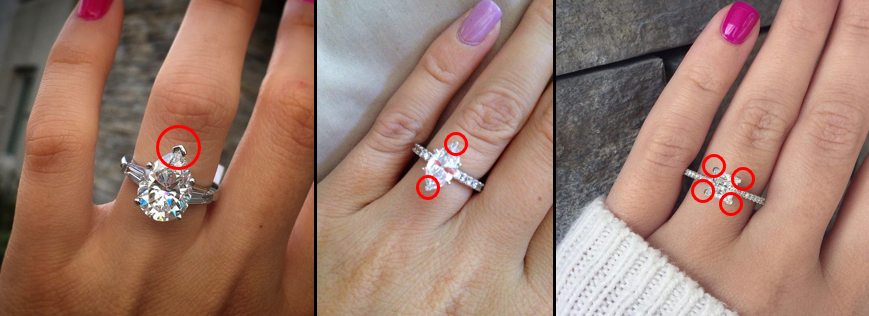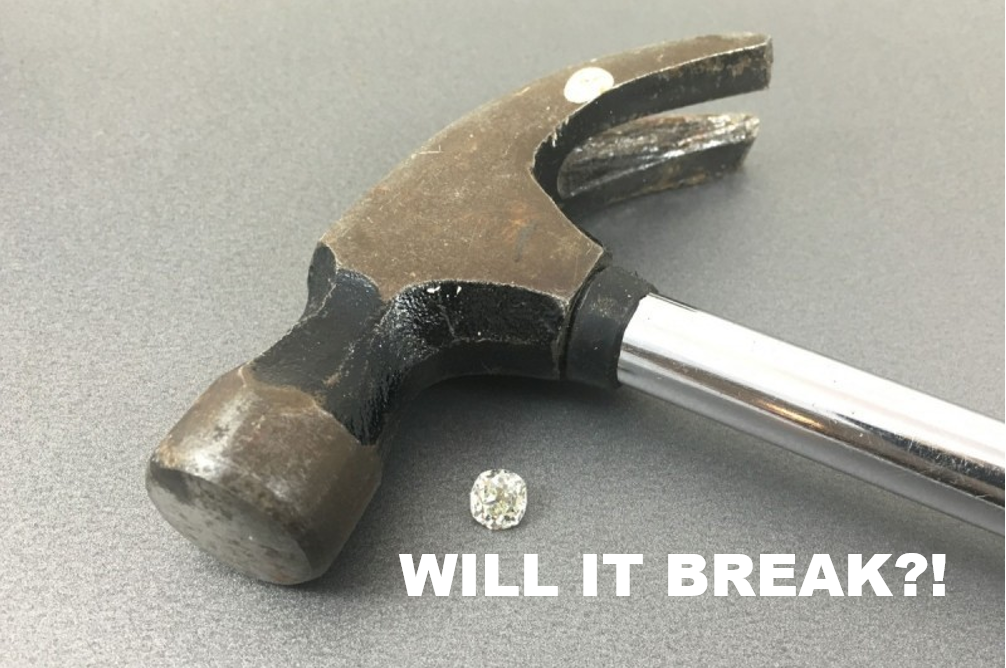I don’t know about you gentlemen, but I have wondered if you can break a diamond with a hammer since I was a young boy. “Diamonds are the hardest thing on earth! Of course you can’t break it with a hammer,” I thought. “Well,” I asked myself, “what if you hit a diamond with a semi-truck?” “No way, the truck would be smashed on whatever was behind the diamond but once you found the diamond in the rubble, it would be totally fine.” The imagination of a young boy is quite fascinating and many times, totally unrealistic.
Diamonds are the hardest naturally forming mineral on planet earth. They are formed from carbon through high temperatures and extreme pressure within the earth’s mantle. Contrary to popular belief, hardness it not a measure of how hard it is to break something. Rather, it is the measure of how relatively resistant a mineral is to abrasion. Hardness is measured through rubbing one mineral against another. The mineral that is not scratched is the harder substance. Toughness (more technically speaking, known as tenacity) is many times the measure which people confuse with hardness. Toughness is the measure of a mineral’s resistance to breaking or becoming deformed. While diamonds are the highest rank of hardness (ranking 10 of 10 on Mohs Scale of Mineral Hardness) they only rank fair-to-good when evaluating mineral toughness. So, while diamonds are essentially unable to be scratched by anything other than another diamond, diamonds can, somewhat easily, be smashed by a hammer. Below, I will further discuss diamond hardness and toughness and how it affects gentlemen in their diamond ownership.
Diamond Hardness vs. Toughness
Before I learned the difference, I used the words hardness and toughness interchangeably and believed that they meant the same thing. For diamonds, and other minerals, this is not true at all. Hardness refers to a material’s susceptibility to scratching and toughness refers to a material’s vulnerability to breaking. For an example, diamonds are very hard but not very tough and steel is somewhat hard but is very tough. This is why diamonds can be used to scratch a steel hammer while a steel hammer can smash a diamond.
The internal structure of a diamond is what determines its degree of hardness or toughness.
Diamonds have a unique atomic structure made from carbon atoms that are linked together to form what is known as a diamond cubic lattice structure. This structure is unique because it contains the highest number of atoms and bonds per unit volume. This is the foundation of a diamond’s hardness, as with this structure, atoms have very little room to move. The quality and perfection of a diamond’s cubic lattice structure determines its degree of hardness, meaning some diamonds are harder than others. This is how diamond cutters can cut diamonds with other diamonds. A diamond cutter identifies an extraordinarily hard diamond and uses it as the master stone to cut all his other diamonds.
A Diamond’s lack of toughness is also a result of its atomic structure. With its atoms so numerous and closely linked together, it does not have any room to move or absorb impact. This also creates cleavage planes, which are zones within a diamond where bonds are slightly weaker than others. This means that if a diamond took a substantial impact, it would either break or remain unchanged. If it broke, it would break along its cleavage plane first, typically creating a long and flat split, like a shard of glass. To give more context, let me explain steel in contrast; Steel is tougher than a diamond because its atomic structure is more spread out. If you smash a steel object, it will bend or change shape before breaking because its atoms have room to shift before their bonds snap. This is also the reason steel is easier to scratch.
How To NOT Break Your Diamond
There are a few simple things you can do to protect your diamond 99.99% of the time.
- Choose the right setting: Choose a setting that protects your diamond. If your diamond is pointed (princess, pear, marquise, etc.), make sure that its setting covers its points (e.g. bezels, partial bezels, V-shaped prongs).

- Regularly examine the setting: One of the most common ways diamonds are damaged or lost is from settings that are bent or broken. A setting’s prongs and bezels do not just hold your diamond in place, they protect your diamond. If a diamond is loose in its mounting and you hit your ring against a counter corner, the diamond can take more of the impact than it would if it were firmly set. Examine your setting when you take your ring on and off, and when you hit it against something.
- Avoid tension settings: Tension settings are risky because, as the name suggests, the diamond is held by tension (see image below). This setting style tightly pinches a diamond’s girdle (edges) to hold it in place. With the mounting already exerting pressure on the diamond from two opposing sides, significant additional contact from day-to-day life could break the girdle; especially if a diamond’s girdle is thin.
And finally…….
DON’T SMASH A DIAMOND WITH A HAMMER


